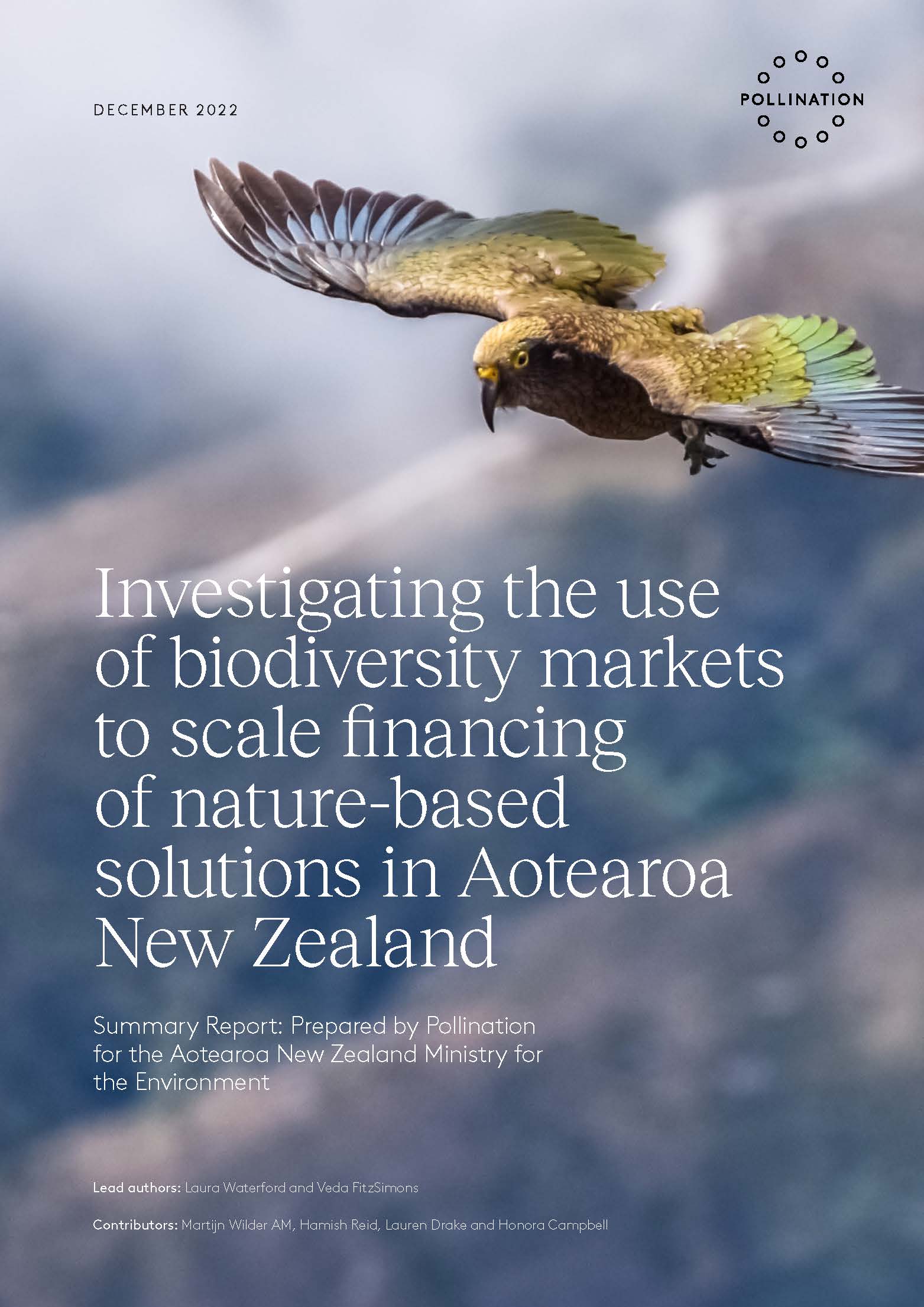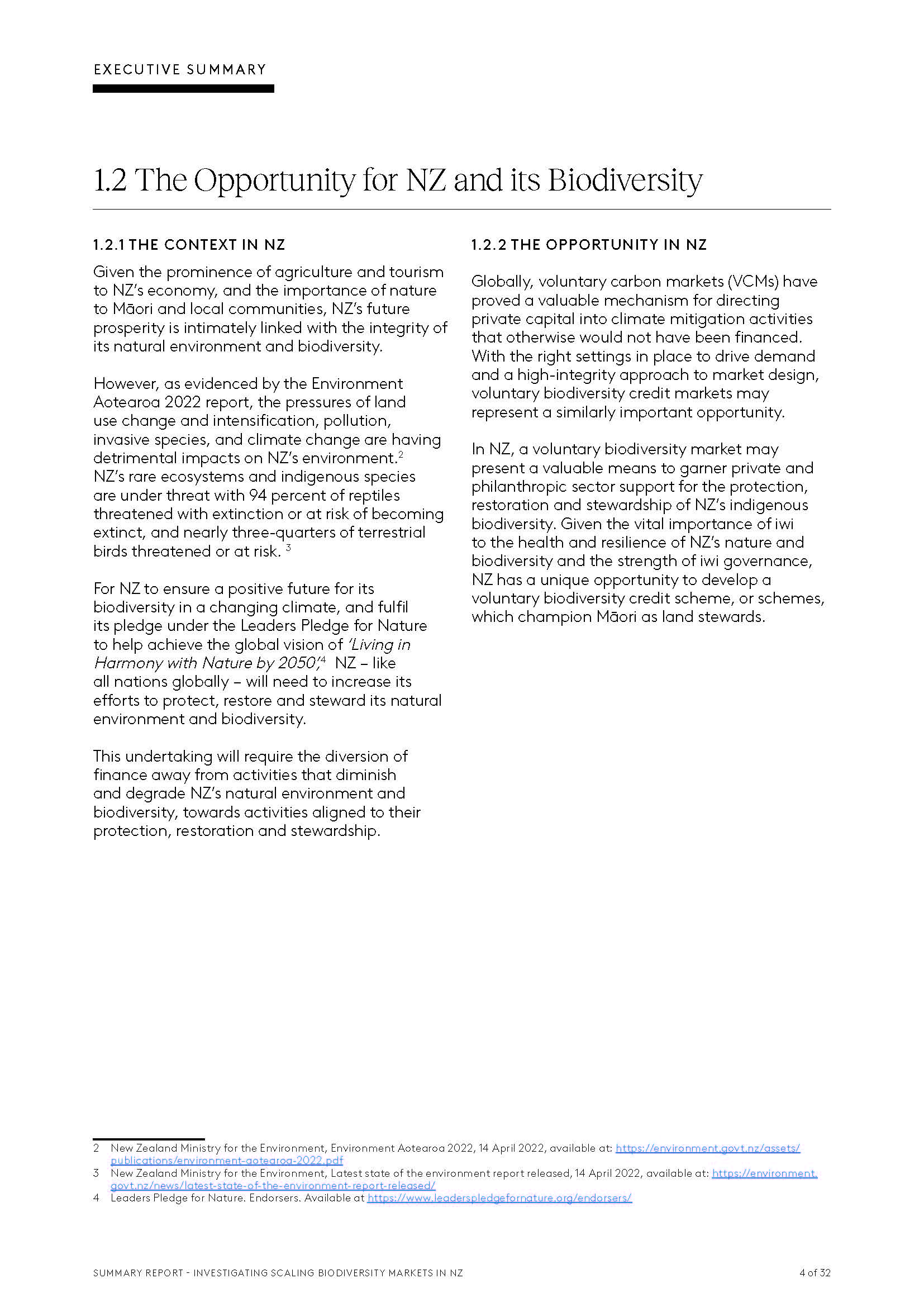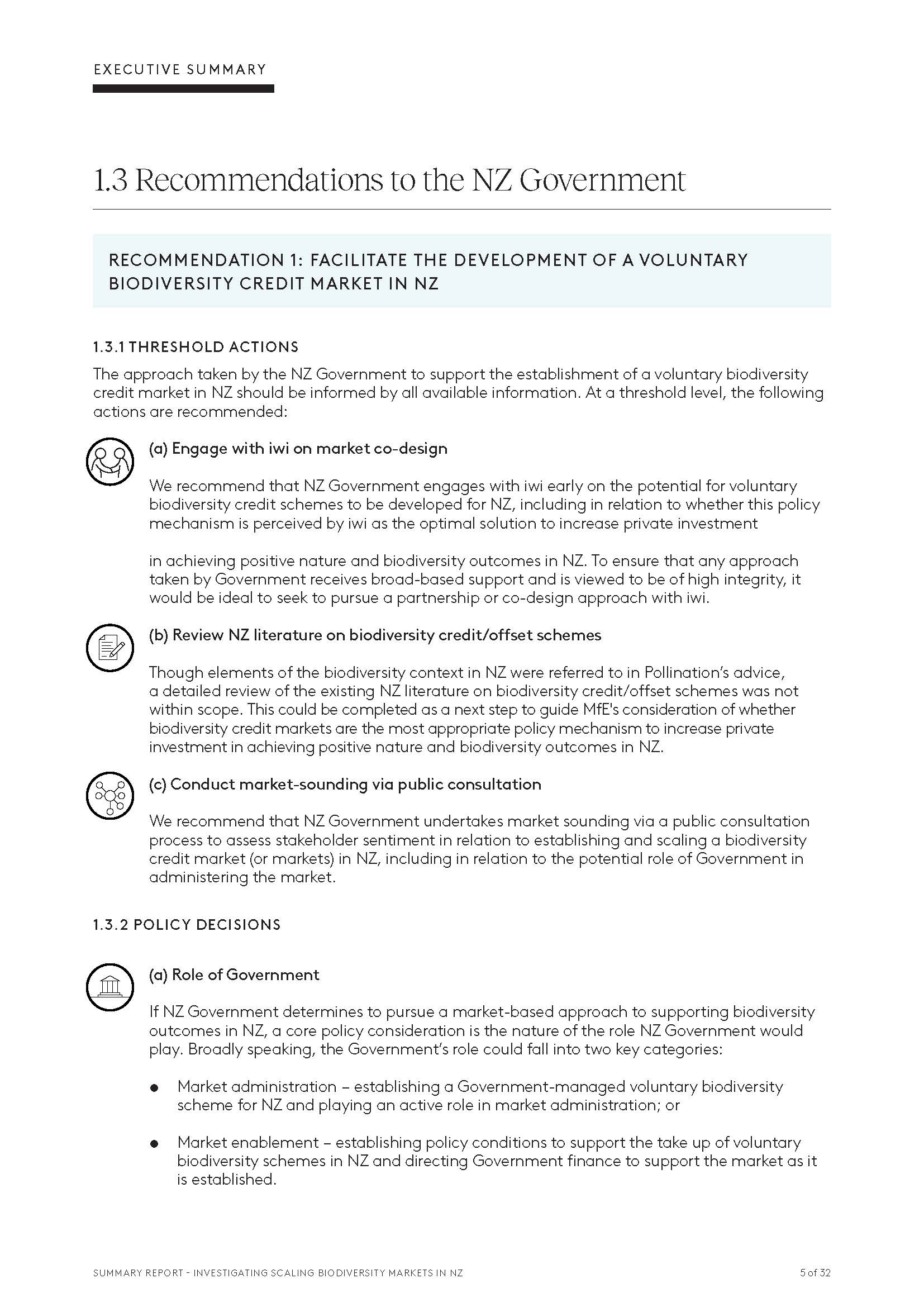Why adopt biodiversity credit markets for financing biodiversity?
Environmental regulation has typically been the primary approach used by governments to protect biodiversity. However, environmental markets are increasingly being leveraged to direct private capital into biodiversity protection, regeneration and stewardship activities.
The unitisation of biodiversity outcomes is a key strength of a market-based approach to biodiversity investment because it provides a clear mechanism for articulating the impact of investments in addressing biodiversity loss and achieving high-integrity outcomes over time.
As we identified in our publication for Nature Finance’s Taskforce on Nature Markets: ”Biodiversity credit markets are increasingly being recognised as one mechanism that can drive financing into the protection, regeneration, and stewardship of biodiversity”.
What principles should underpin an effective scheme?
The work carried out by Pollination starts by establishing a set of potential principles that can underpin a successful voluntary biodiversity credit market in Aotearroa New Zealand. It’s important for any future scheme to be designed to attract strong participation and investment at scale, while also displaying the highest standards of integrity and transparency.
Recommendations
Different models are available for establishing a future market: The government can play the role of administrator or can simply be an enabler for privately owned schemes. Hybrid versions of this with differing levels of government oversight are also possible and should be investigated, the report recommends.
Our work lists ‘priority actions’ that the government should consider if it does want to move ahead with establishing a biodiversity credit scheme. These include government providing clarity on the appropriate use case for biodiversity credits and their role in contributing to ‘nature-positive’ goals, as well as legislating to provide clarity on the legal right to biodiversity.
It says initiatives such as these would be important for establishing market confidence and providing the necessary clarity to encourage project proponents to undertake projects that generate biodiversity credits and entities that may wish to voluntarily purchase biodiversity credits to do so.
Interest is building, globally
At Pollination we have observed a proliferation of activity in biodiversity credit markets, particularly since the Post-2020 Kunming-Montreal Global Biodiversity Framework (GBF) was agreed at COP15 in December 2022. Target 19 of the GBF recognises biodiversity credits (as distinct from offsets) as an innovative mechanism for driving private sector finance into biodiversity.
Support from governments continued to build in 2023 at the One Forest Summit held jointly by France and Gabon in March 2023, where agreement was reached for biodiversity credits to be used as one mechanism to provide a financial incentive for countries to protect their most vital carbon and biodiversity reserves through the establishment of a €100 million Positive Conservation Partnerships Fund.
Most recently, in June 2023, the governments of France and the United Kingdom launched a ‘Global Roadmap’, “with the goal of crowding in new partners and innovation, and increasing commitments from key public and private actors to co-develop equitable, impactful biodiversity credit markets at scale in the coming months and years”.
In this context, governments around the world will no doubt be closely watching the approach taken by Aotearoa New Zealand to supporting the development of a domestic voluntary biodiversity credit market.



